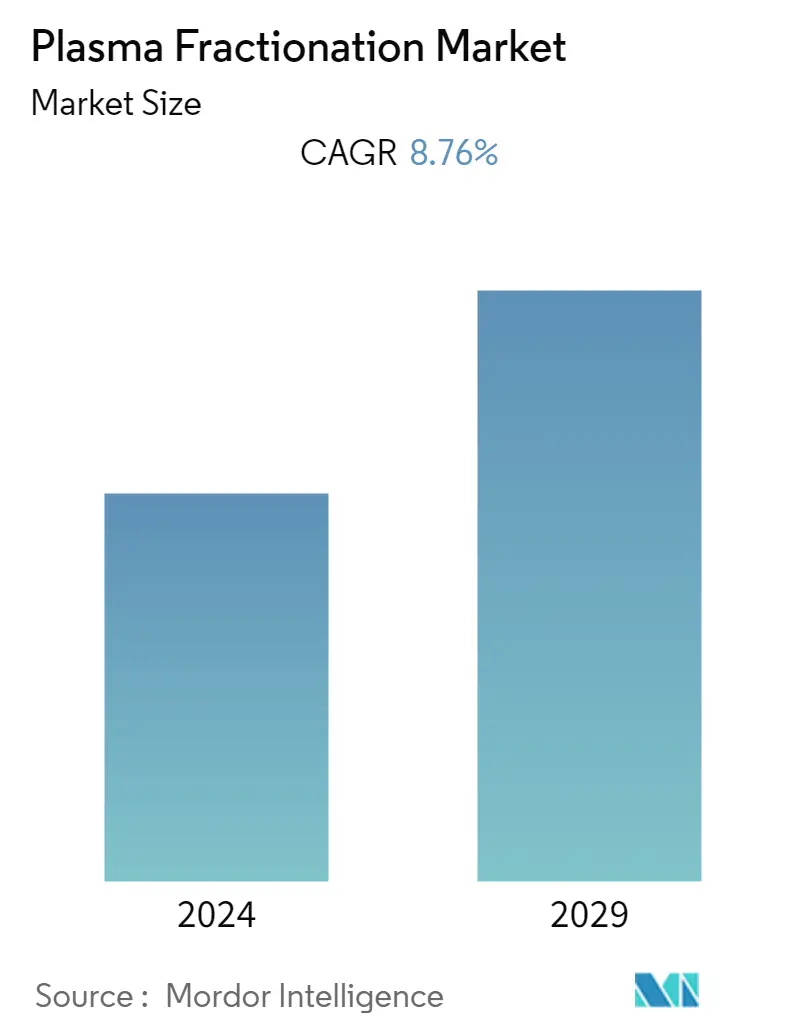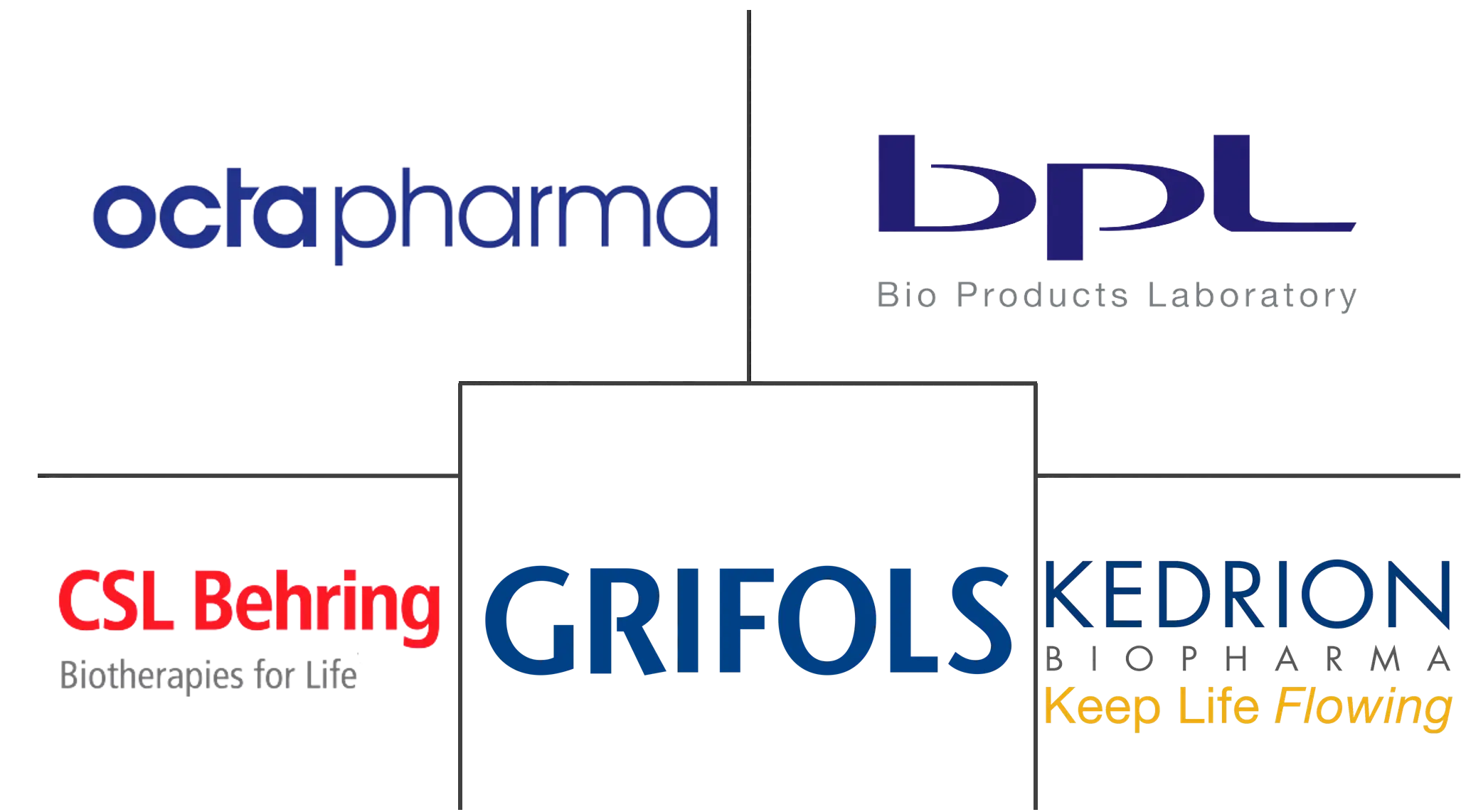Market Size of Plasma Fractionation Industry

| Study Period | 2021 - 2029 |
| Base Year For Estimation | 2023 |
| Forecast Data Period | 2024 - 2029 |
| CAGR | 8.76 % |
| Fastest Growing Market | Asia Pacific |
| Largest Market | North America |
Major Players
*Disclaimer: Major Players sorted in no particular order |
Need a report that reflects how COVID-19 has impacted this market and its growth?
Plasma Fractionation Market Analysis
The plasma fractionation market studied is anticipated to grow with a CAGR of nearly 8.76% during the forecast period.
During COVID-19, the convalescent plasma demand increased, as the doctors initially treated the patients affected by the virus with convalescent plasma. For instance, according to an article published by frontiers in June 2021, convalescent plasma was widely used worldwide to treat patients hospitalized with coronavirus and prevent disease progression. Studies revealed that convalescent plasma transfusion contributes to improved symptomatology and viral clearance. Thus, there was an increasing need for plasma fractions to treat the COVID-19 patient initially. As the pandemic has subsided and fewer people are getting infected with the virus, the studied market is expected to have stable growth during the forecast period of the study.
Specific factors driving the market growth include the growing use of immunoglobulins in various therapeutic areas, the rising geriatric population coupled with rising in the prevalence of rare diseases, and the increasing number of plasma collection centers across the globe. For instance, according to the WHO facts of October 2022, the global population proportion aged 60 and up will nearly double by 2050. By 2050, 80% of the world's elderly will live in low- and middle-income countries and are also said to be aging much faster than in the past. Hence, with the rising geriatric population, the burden of rare diseases is also expected to increase worldwide, increasing the adoption of plasma fractionation products and thus driving the growth of the studied market. Furthermore, according to an article updated by NCBI in August 2022, Von Willebrand's disease is estimated to affect approximately 1% of the population globally. Still, clinically significant disease prevalence is estimated to be about 125 per million, with severe disease affecting up to five per million. Hence, the rising geriatric population coupled with the increasing burden of rare diseases like Von Willebrand is anticipated to drive the demand for plasma fractionation products, thereby boosting the market growth.
Moreover, the increasing number of plasma collection centers around the globe is also a significant factor in the growth of the studied market. For instance, in April 2022, Bio Products Laboratory Ltd (BPL), a leading manufacturer of plasma-derived protein therapies, opened its 29th plasma donation center. Furthermore, in October 2022, Freedom Plasma opened its fourth plasma donation center in Ohio, US. Hence, opening new plasma centers worldwide is expected to increase the production of plasma-based products, thus enhancing market growth.
Additionally, various activities by the key market players, such as product launches, partnerships, mergers, and acquisitions to bring technologically advanced plasma fractionation techniques and products into the market, are anticipated to boost the market. For instance, in January 2022, Octapharma received approval for expanding the indications of cutaquig in the European Union (EU). Cutaquig is a human immunoglobulin for subcutaneous administration. It provides flexible treatment options to many patients with acquired immune deficiencies.
Thus, factors such as the growing use of immunoglobulins in various therapeutic areas, the rising geriatric population coupled with rising in the prevalence of rare diseases, the increasing number of plasma collection centers, and various activities by the key market players are anticipated to boost the market over the forecast period. However, strict regulations for handling plasma protein products, high cost, and reimbursement issues restrain the market studied.
